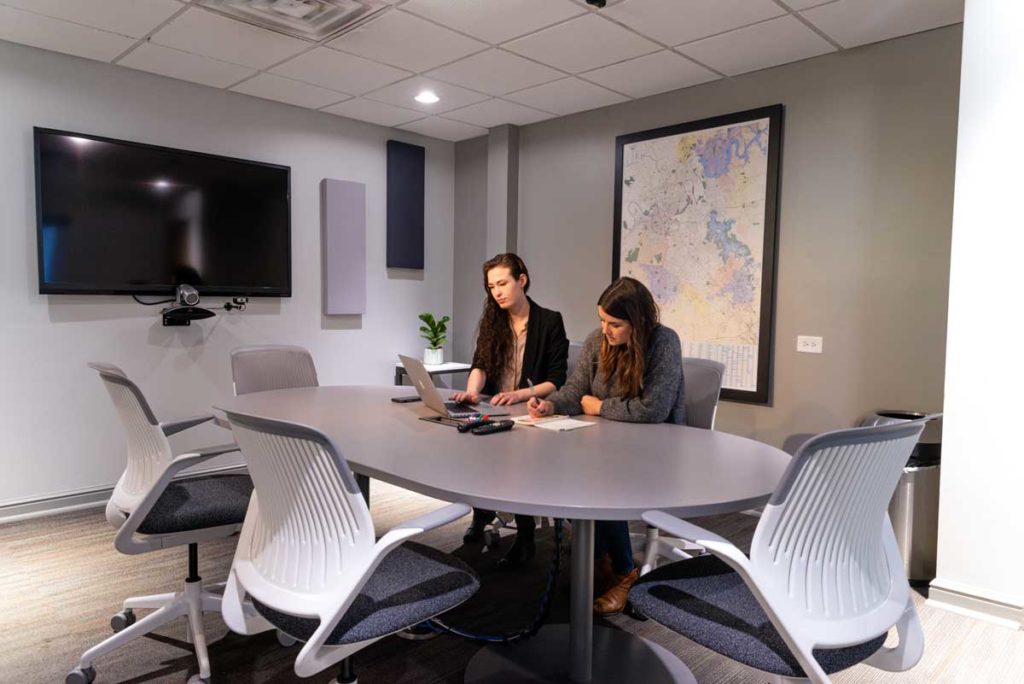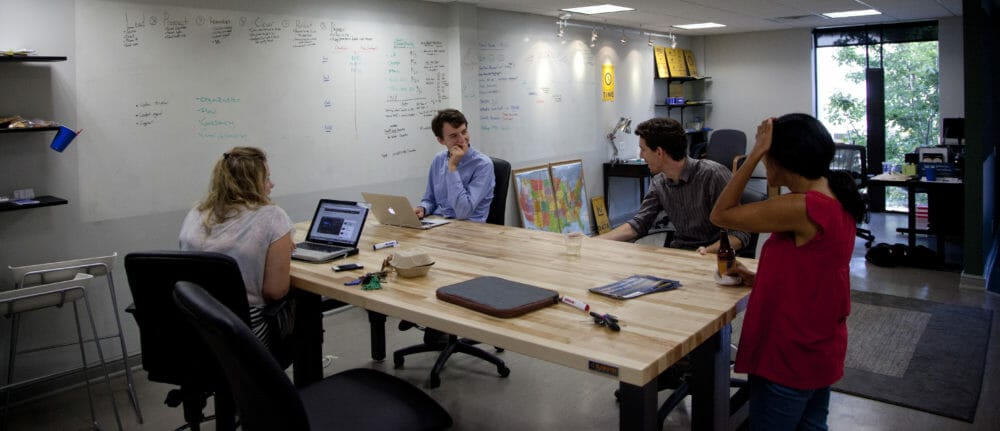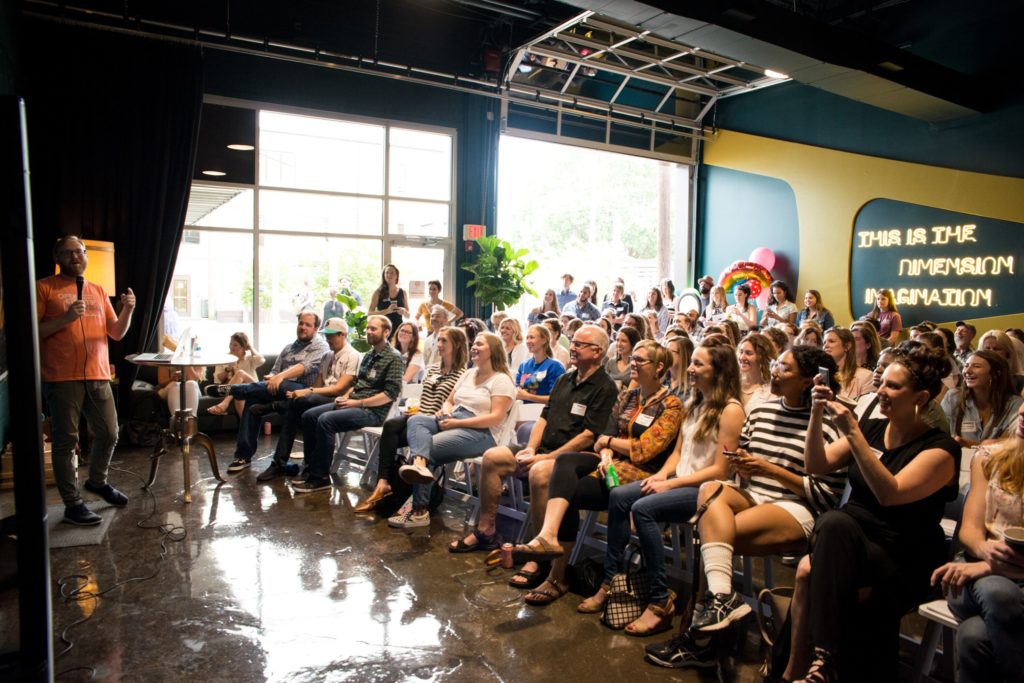Offsite meetings are broader in scope and more “big-picture” in purpose than your typical workplace meeting with 2-10 people. Offsite meetings for companies can range in purpose from team building, onboarding, problem solving, or strategizing for the future years. No matter the reason, the pre-planning and follow-up are crucial for long-term results and success.
While skeptics wonder how truly effective off-site meetings are, an article from The Harvard Business Review points to research and experience that explains the meeting’s success depends on how well organized and clearly focused the offsite is beforehand.
To help you organize a top-notch offsite meeting that generates tangible results, we’ll dive deeper into these bullet points:
- Prep work is as important as the meeting itself. Before the meeting . .
- Lay out clear objectives
- Discuss with company leaders to determine what is most important
- Decide the gathering size needed to discuss objectives
- Who will be there? What should they talk about, when, and why?
- Gather and distribute data to support objectives
- Both while planning and during the meeting, keep goals focused and minimal to prevent overwhelm and increase meeting productivity
- Vary activities and environment to encourage engagement and prevent fatigue
- Reiterate objectives and give summaries at the end of each presentation
- Have a clearly laid out plan for the future and attainable, actionable goals at the end of the meeting
- Follow-up on objectives regularly after the meeting to ensure goals are being met

WHAT should the offsite meeting cover?
First, decide on your objectives. What outcomes do you want from the offsite meeting? Are you laying down a strategy for the forthcoming year, or nailing down concrete decisions about problems you need to solve? Make sure you ask the leaders of the company what they would like to discuss and their future goals.
Refine overarching goals down to 4-10 key initiatives you would like to cover during the meeting. Make the number of topics you will cover manageable for everyone.
Throughout the planning process, measure your objectives with the activities to make sure they align.
WHO should attend the offsite meeting?
Would it be a meeting if there weren’t any people? Decide both who will be attending and if there will be any guest speakers. Guest speakers come in handy when you need outside expertise to speak on a certain issue that the company needs an objective perspective on.
Also keep in mind, the number of people attending can affect the productivity of the meeting. To prevent a “too many cooks in the kitchen” moment, refine who needs the knowledge and who needs to give input. If someone is there simply for the knowledge, would a white paper, on-site meeting, or phone call suffice to give the information?
Furthermore, consider the politics involved. If a leader speaks too soon on an issue, then that could sabotage the potential for others to voice their opinion if it doesn’t align. As HBR says “The more important the subject being considered, the greater the need for patience” to make sure all opinions are heard before coming to a conclusion.1

WHERE should the offsite meeting take place?
Experienced meeting coordinators often choose meeting spaces with an environment different from the daily office building where workers routinely absorb themselves in day-to-day tasks. To think outside the box, one must be outside the box, so to speak. Furthermore, a relaxed space with an eclectic and quirky aesthetic promotes creative thinking and free flowing conversation. When people feel they can openly speak on their ideas and opinions, then companies can more easily reach an agreement and work towards a unified goal.
Consider what technical capabilities your meeting may need, as well as essential amenities. If you need them, make sure the venue you choose has a projector or LED Screen, speaker system, adequate room for activities, chairs, tables, breakout rooms, parking spots, etc.
If you’re looking in East Nashville, our quirky, artistic space has ample room for gatherings of 150. Just 5 minutes from downtown and a stone’s throw from the interstate, our easily accessible location is a perfect spot to wrangle everyone living in different parts of town. Plus, free on-site parking never hurts.
Don’t forget about food! Will the meeting be catered? Will attendees be on their own for lunch? Will you guys make reservations for meals? Check the venue’s surrounding neighborhood for appropriate meal options. (We at Center 615 always recommend East Park for coffee, Turnip Truck for snacks, Greko for fast-casual lunch, Hawkers for lunch or happy hour, Edley’s Bar-B-Que for catering, and Hunters Station for indecisive groups.)

HOW should you tackle the offsite meeting objectives?
The agenda. Is the most important. After you’ve answered the “what,” “who,” and “where,” you can now easily map out what the actual meeting will look like.
A structured agenda is much more effective—one that includes not only the sequence of topics and the time allotted to each but also objectives for each segment. Such a detailed agenda helps participants to see how the days’ activities will move their discussions toward the ultimate goals.
Gather all the data and reading material you may need for the meeting. Make sure all attendees have these well in advance. Over communicate with everyone attending the meeting on what they can expect and what they should do to prepare. However, be careful not to overload people—or they won’t read everything.
When you plan out the schedule for the meeting, remember that balance is key.
Consider both the number and duration of meetings, presentations, and activities. Refine and align—check your agenda to make sure it still aligns with the objectives you want to achieve. You may need to refine the agenda and the number of objectives if you determine that you have scheduled too many meetings. Of course, you want to meet your objectives for the offsite meeting, but not at the expense of meeting fatigue—which would hinder productivity. If possible, save some objectives for future offsite meetings. It might be more worthwhile to schedule two offsite meeting days with a follow-up meeting one month later, or to split the meeting over the course of several months.

HBR suggests “It’s far more effective to break the off-site into an initial two-day meeting and a one-day follow-up session a month later or a series of subsequent half- or full-day meetings each quarter. Why? Because executive teams are actually legislatures. There is, in effect, the congressman from Sales, the senator from Finance, and the ambassador from Operations. Each represents powerful constituencies in the body politic of the organization. Breaking up the meeting gives team members time to take the results of the initial session back to their constituents.”1
Plan activities around objectives accordingly—and make sure everyone isn’t sitting down for too long. Insperity suggests to “balance sit-down lectures with more physical activities to keep people energized.”2
When choosing activities, keep in mind your attendees’ physical abilities and ages. Why not ask for input from your team to see what would be most helpful for generating ideas and creating bonds?
NEXT steps after the offsite meeting
After the meeting, what happens? The whole purpose of the offsite meeting should be clear at the close. To ensure your company meets its goals, you can design a follow-up strategy to implement and stay on track. Perhaps schedule monthly on-site meetings to discuss everyone’s progress. Not only will this continue open communication, but it establishes team accountability.
Summary:
Though notorious for not resulting in long-lasting results, an offsite meeting will be effective when it is well designed. Sparking momentum from open-minded exploration, passionate discussion, and goal alignment will lead to stronger commitment to see goals through to completion.
When participants feel heard during meetings and have a clear picture of expectations going forward, results will follow. To ensure effectiveness, incorporate enough collaboration and summarization during the offsite meeting. Lastly, consider a hand-out with actionable next steps at the close of the meeting.

Stuck on ideas for productive activities?
Y’all the HBR article is where it’s at. So here’s some highlights from them:
Tactics:
- Print the pre-meeting fact book and tape the sheets onto a wall (artistic creativity encouraged). Instruct team members to place green sticky notes on pages they agree with, red stickies where they disagree, yellow stickies where they would like more data, and colored dots that correspond with a high-low priority scale. The purpose of this exercise clearly maps topics of high importance and points of agreement and disagreement.
- Schedule individual pre-meeting interviews with company leaders. Write a single word or phrase that broadly describes a general topic of concern for the company on index cards, like “internal communication,” “ad spend,” and “target audience.” Place the cards on the interviewees’s desk and ask them to rank their top three cards of topics that would have the greatest positive impact if addressed within 36 months. Tally and graph each time the card was picked and ranked. This helps the meeting designer strategically decide which issues to talk about during the meeting to move towards alignment.
- To keep the offsite meeting fun and interesting, organize a mock betting game. Create a square grid with each square representing a potential source of revenue for the future and invite the top leaders of the companies to place bets using poker chips. The chips represent the total projected revenue from that source. Be sure to place bets privately so one person’s prediction does not influence someone else’s. This metaphor visualizes where meeting attendees should spend more time talking with the goal of coming to a unified agreement for future plans.
- A simpler way to determine viewpoint discrepancies is to use classic voting on a scale of 1-10. Name an issue based on customer surveys and market place data, and ask people to give their opinion on how well the company addresses the issue, such as handling customer complaints. It may be surprising to see the differences in how various company branches view the way an issue is handled.
Feel ready to start searching for the perfect offsite meeting venue? Check out Center 615’s Rec Hall & Courtyard, Main Street Gallery, and Meeting Room options.
Sources:




